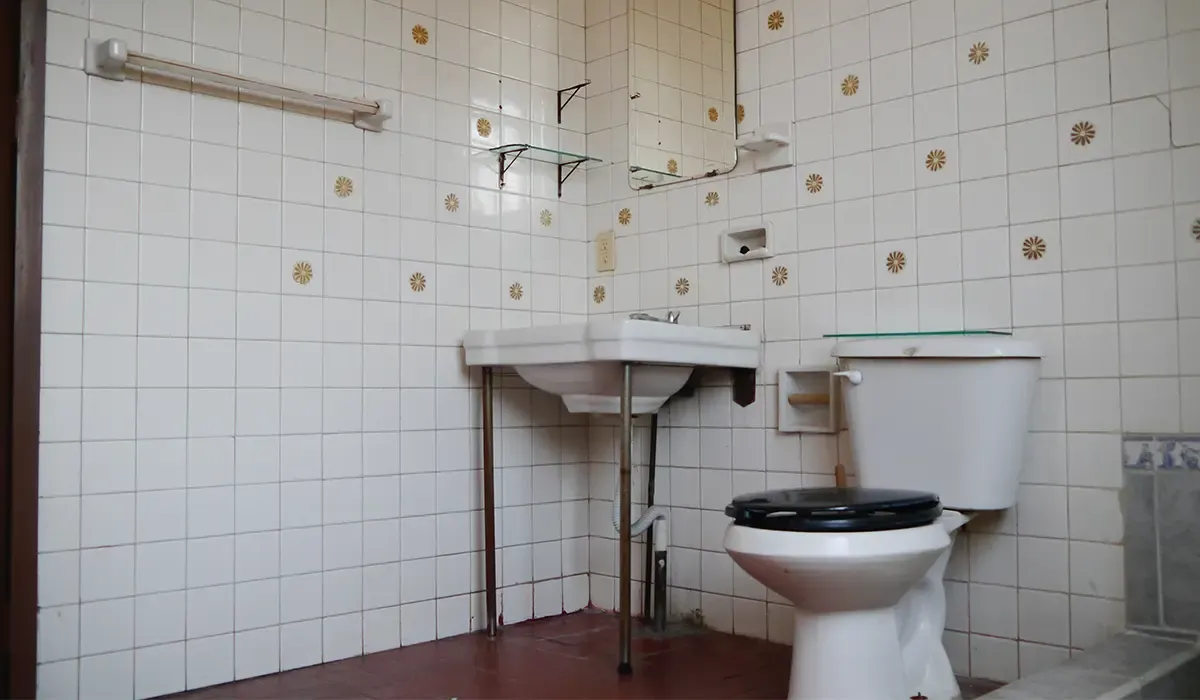Toilet history
If you were to ask a random person about a device or everyday object that they cannot imagine living without, there is a high chance they would mention a flushing toilet. Its presence in every household is something completely obvious to most of us - just like access to electricity or running water. However, these three elements have one thing in common - they are relatively new inventions. So who and when invented the toilet in the form we know today, and how did people manage in times when toilet paper did not yet exist?
History of Toilets
The history of toilets as designated places for fulfilling physiological needs in the most comfortable conditions possible (for oneself and the surroundings) dates back to ancient times. The oldest known objects of this type can be found in present-day Pakistan, in Mohenjo-Daro. During archaeological excavations carried out in the early 20th century, residential houses equipped with designated toilets connected to sewage channels were described.
Toilets were also known to the inhabitants of ancient Mesopotamia, Egypt, and China - in other words, each of the great civilizations created solutions that ensured maximum comfort and hygiene (according to the knowledge of that time).
The beginnings of toilets also marked the emergence of the first public facilities of this kind; in some countries, this was associated with the development of a specific "toilet culture". A well-known example is ancient Rome, where public restrooms served as a place to meet with friends or business partners, both for social and, as we would say today, business purposes.
But what about toilet paper? The history of this invention is actually as long as that of toilets themselves. The need for using hygiene products has been with us forever. However, in the past, their role was fulfilled by various types of rags, unprocessed wool or linen, or hemp waste from fabric production. In case of need, grass or hay, moss, and even snow were also used. The ancient Romans, on the other hand, were known for using reusable sponges (of course, washed and properly cleaned after each use).
The concept of using paper as a hygiene product originated in medieval China. In fact, paper as such was invented there. It was a truly high-quality product. The best quality sheets, intended for the imperial family, were exceptionally soft and additionally perfumed. Their comfort of use was comparable even to modern products of this type. Unfortunately, this invention was forgotten for a long time, and the history of toilet paper in the West is inseparably linked to the history of... printed newspapers and mail-order catalogs. Pages torn out of them were still used in this way as late as the 1930s.
The prototype of modern toilet paper was developed in the mid-19th century by Joseph Gayetty. This American entrepreneur began selling his own idea in 1857, advertised as an effective remedy for hemorrhoids (its properties were attributed to the aloe extract with which it was saturated). Toilet paper in the form of rolls appeared in 1879. The invention gained increasing popularity, especially after 1942, when the first two-ply paper was released in the UK, known for its softness and durability.
Who invented the toilet?
As with many other everyday objects, the answer to who invented the toilet is not entirely clear. Solutions that can be considered as "ancestors" of the known toilets or outhouses, which can be used while sitting instead of squatting, were developed in many places in the ancient world. Initially, they took the form of simple seats with an opening. Historical sources indicate that significant improvements to this system appeared in Crete. Elements such as a footrest (which allowed for a position closer to squatting) were primarily aimed at improving ergonomics and comfort.
The person who invented the toilet in today's understanding of the word can be considered the British poet John Harrington. In 1596, his design of a toilet with a flush was born. However, this invention was forgotten for nearly 150 years due to the lack of sewage systems; it was only rediscovered in 1738. This time, the inventor of the toilet was John F. Brondel.
It is worth mentioning that one of the key elements of today's toilets was created only 20 years later. It's the... bend. Patented in 1758 by Alexander Cummings, a Scottish watchmaker, it helped eliminate the problem of unpleasant odors from the "sewage" that plagued the first users of Brondel's toilets.
Toilets in the Middle Ages
The invention of flush toilets, and above all - sewage systems - eliminated a problem that plagued city dwellers in the Middle Ages and the beginning of the modern era. It was the unimaginable amount of sewage and the stench that even people accustomed to urban conditions complained about.
However, this does not mean that latrines did not exist at that time. They were quite common; they were mainly placed in less frequented alleys or at the ends of streets, allowing the waste to flow down relatively freely. Interestingly, toilets in medieval cities also served as public garbage dumps. This has led modern archaeologists conducting excavations to often find objects that are valuable sources of information about the daily lives of residents (examples of which can be seen in the Archaeological Museum in Gdańsk).
The problem of pollution had a slightly different source. Night pots were most often used as domestic toilets in the Middle Ages. These, in turn, had to be emptied somewhere. The latrine was not always close enough; most often, the waste was thrown out... the window. Straight onto the street. This not only led to the pollution of the streets, but also posed a real risk of accidentally spilling the contents of the night pot on passersby.
History of the toilet
The history of toilets placed in houses actually begins in the 20th century. That's when buildings and apartments equipped with dedicated cabins started to be designed. However, this does not mean that their spread happened very quickly. Contrary to appearances, even today not every house, especially in rural areas, has a flush toilet connected to the sewage system.
Nevertheless, it can be safely said that a hygiene revolution took place in Poland in the interwar period. In 1928, a regulation was issued stating that every developed plot of land must have an external toilet. To this day, they are known as "sławojki" - named after Felicjan Sławoj Składkowski, the then Minister of Internal Affairs and creator of this regulation.
The development of technology has also not bypassed toilets. Over time, more and more modern solutions appeared, using materials that are easy to keep clean. Currently, the standard are steel sanitary facilities or special ceramics, as well as the presence of numerous amenities that facilitate hygiene maintenance. The washlets, invented in Japan, are gaining increasing popularity. These are toilets with integrated bidets, which have functions such as automatic flushing, lifting and lowering the lid, or heating the seat.
The first public toilets
The first public toilets resembling modern facilities began to appear in Europe in the first decades of the 19th century - initially in Paris, Berlin, and London, and eventually spreading throughout the continent. However, it was the last few decades that brought significant progress in terms of comfort when using public bathrooms. The first toilets in public places were difficult to access and the hygiene conditions left much to be desired. Nowadays, almost every public utility building, and often also urban spaces, have facilities of this type. Modern public toilets are comfortable and safe spaces that utilize numerous amenities, such as mirrors, specially adapted accessories, sanitary facilities, and handrails and grips tailored to the needs of people with disabilities, as well as solutions designed for the youngest users. Thanks to this, almost everyone can use a modern public toilet, regardless of age or health condition.







 Polski
Polski
 Český
Český
 Deutsch
Deutsch
 Spanish
Spanish
 French
French
 Italian
Italian